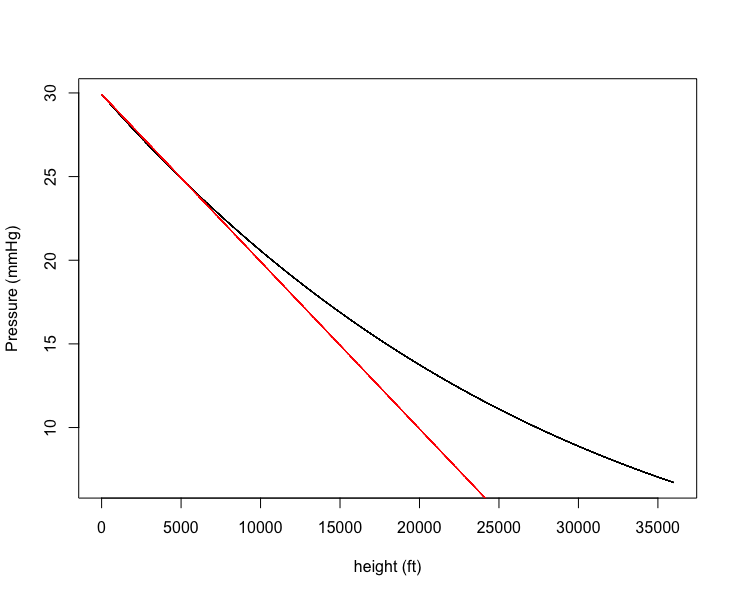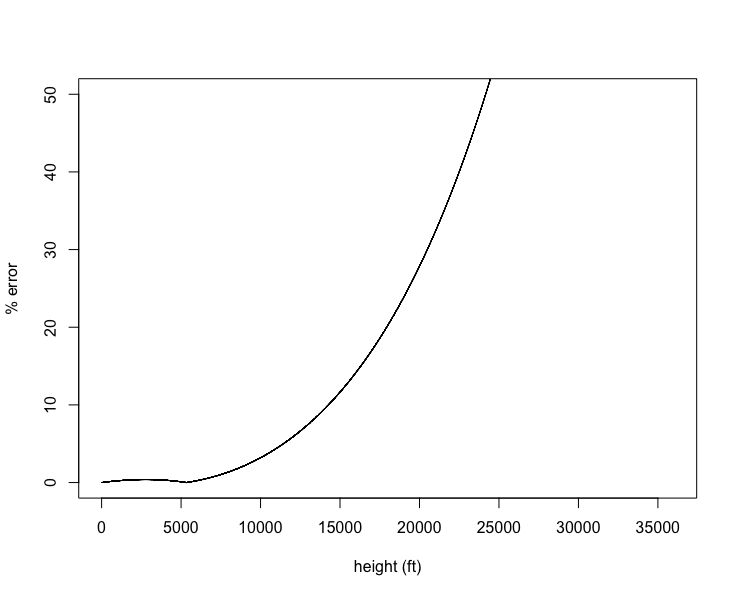Here's the standard atmosphere up to 40,000 feet:
View attachment 77717
Look at the pressure ratio column, and that's about the max percent power you'll be able to get at that altitude. A normally aspirated plane can, thus, make 75% power up to 7000 feet and change, or 65% power up to 11,000 and change.
Engines that are the same size and HP, the "crossover" is at sea level. Climb at all, and the NA one will start to lose some power while the turbo one will be able to maintain 100% power up to its critical altitude, after which it will start to taper off as well.
When you're speaking of smaller turbocharged vs bigger NA, the plane that comes immediately to mind is the Dakota. The NA version is a 235hp Lycoming O-540 while the turbo version is a 200hp Continental TSIO-360. If we assume that the crossover point is below the Conti's critical altitude, we just need to know where the Lyc will be developing 200hp. 200/235 = .8511, so looking at the chart, somewhere around 4400 feet.
However, if you're talking about cruise at 65% for example, the Conti will make .65*200 = 130hp at 65%. 130hp is .5532 * 235, so the NA version could cruise with that much power at about 15,500.
Now, these calculations aren't perfect. MP will drop a little more due to the air filter and possibly other intake quirks, mag timing may no longer be optimum, and plenty of other caveats. But, this is a start.
What *exactly* are you trying to figure out? What airframe(s), what engines? We might be able to give you a more accurate answer with additional information.




 ) Sounds like it would be a good solution for your situation. If the 205 is your "forever plane" then you might as well go for it! And I think the supercharger would be easily removed someday if FAT goes away and the system isn't supported any more, though hopefully that's far in the future (and a couple of owners down the road for the plane too).
) Sounds like it would be a good solution for your situation. If the 205 is your "forever plane" then you might as well go for it! And I think the supercharger would be easily removed someday if FAT goes away and the system isn't supported any more, though hopefully that's far in the future (and a couple of owners down the road for the plane too).